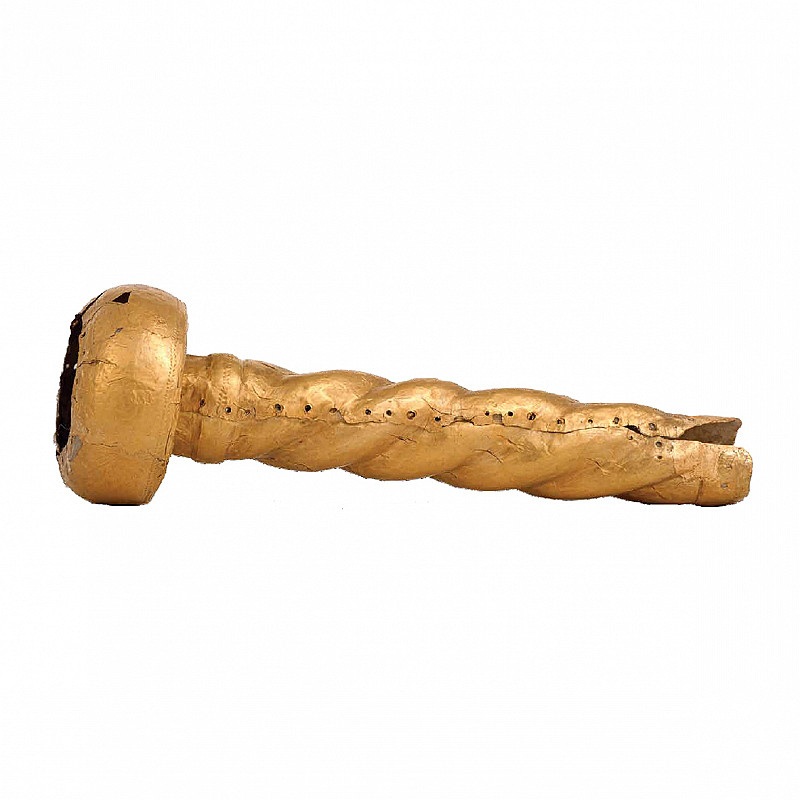Gold Sceptre
Gold sceptre
Sceptre Burial, (M5 Nos.10 – A619), Mapungubwe Hill
AD 1250 – AD 1290
52.90g, 206.27mm x 61.15mm
Mapungubwe National Heritage Collection
Reconstructed by the British Museum, 1999
The gold sceptre, mace or staff, consists of two parts, i.e. a longitudinal twisted stem, formed from one sheet of gold foil and a decorative knob or finial that was formed and pleated from gold foil into a circular shape. The top portion of the sceptre is finely decorated with two rows of punctated ornamental decoration. Such 3-dimensional shaping was achieved by folding, creasing and pleating the gold foil and rows of gold nails were used to hold the foil intact. The sceptre
would have originally been shaped onto a wooden core, which has disintegrated over time. The short ceremonial staff probably served as a symbol of authority and power of its bearer – perhaps a rainmaker, community elder or a royal advisor. The gold sceptre is a specifically declared heritage object.

